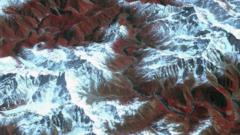Chinese authorities have kicked off construction on the Motuo Hydropower Station along the Yarlung Tsangpo river, located in the Tibetan Plateau. This ambitious project is causing alarm in India and Bangladesh, who rely on the river downstream. Chinese Premier Li Qiang led the groundbreaking ceremony, promoting the venture as a way to enhance local prosperity while ensuring ecological protection.
This $12 billion dam is set to eclipse the iconic Three Gorges Dam, potentially generating three times as much energy. However, experts worry that it grants China leverage over vital water resources that flow into Indian states like Arunachal Pradesh and Assam, and further into Bangladesh. Indian leaders have voiced fears that the dam could trigger severe water shortages, endangering local tribes and their livelihoods.
India's government has previously urged China to prioritize transparency regarding the project’s impact on downstream countries. In response, China asserted it has the right to develop the river but remains open to concerns. With Bangladesh also seeking more information on the dam, regional tensions continue to simmer.
Nestled in a canyon heralded as the deepest on Earth, plans involve extensive tunneling around the iconic Namcha Barwa mountain. The project aligns with President Xi Jinping’s goals to channel energy from rural Tibet to the electricity-hungry cities in the east. While the Chinese government touts green energy and rural upliftment, activists argue this exploits Tibetan land and stirs local unrest. Past protests against such developments have seen harsh crackdowns, with reports of arrests and violence towards demonstrators. Environmental groups also caution that damming could perilously disturb the region's unique biodiversity and geological stability, given existing earthquake risks.



















